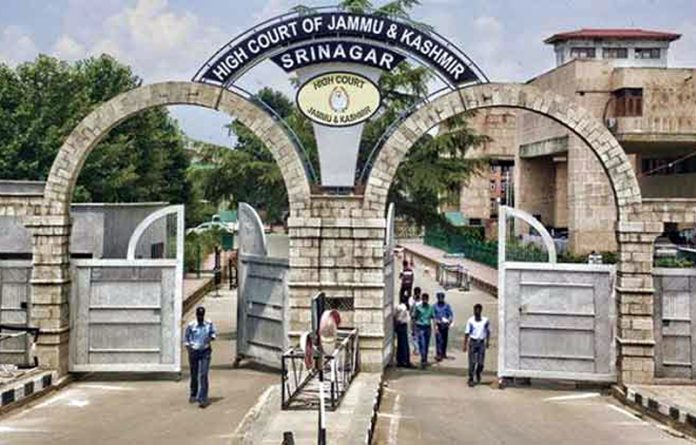Excelsior Correspondent
Srinagar, Apr 12: The High Court today held that it has jurisdiction to entertain challenging actions taken by the banks against the loan defaulters and guarantors under Securitization and Reconstruction of Financial Assets and Enforcement of Security Interest (SARFAESI) Act till a circuit bench of Debt Recovery Tribunal (DRT) is established by the Government.
Follow the Daily Excelsior channel on WhatsApp
The decision has been passed in a batch of petitions challenging the actions of banks against the defaulters and guarantors under SARFAESI Act. An issue of seminal importance has arisen in these batch of 46 writ petitions where the actions of the Banks/Financial Institutions/ Secured Creditors initiated under Sections 13 and 14 of SARFAESI Act have been questioned by the borrowers and the guarantors and aggrieved persons on the plea, amongst others, that though there is a statutory remedy available, it is of a limited nature and not efficacious and hence, they have been compelled to approach this Court by invoking jurisdiction under Article 226 of the Constitution of India.
The Banks and Financial Institutions have opposed this plea contending that since statutory remedy available is indeed efficacious and hence, these petitions are not maintainable. “…we would hold that this Court would have jurisdiction to entertain petitions under Article 226 of the Constitution of India to consider challenges to various actions initiated by the financial institutions and banks under the SARFAESI Act, in spite of availability of alternative redressal forum at the DRT located in Chandigarh, as we consider this alternative forum to be inefficacious to the litigants in the UTs of J&K and Ladakh”, read the judgment, delivered by the HC bench comprising Chief Justice N Kotiswar Singh and Justice Waseem Sadiq Nargal.
The counsels for the aggrieved petitioners argued that, even though the statute provides an alternative remedy under Section 17 of the SARFAESI Act against actions initiated under Section 13 and 14 of the Act, in the facts and circumstances obtaining in these petitions, the same cannot be said to be an efficacious remedy and hence this Court may entertain these writ petitions..
“In order to avoid this nature of dispute resolution, involving disputed question of facts and which may involve adducing of evidence, which invariably would arise when dealing with SARFAESI matters, the option before this Court is either to direct the Union Respondents to constitute DRTs or Benches or Circuit Benches in the UT of Jammu and Kashmir and UT of Ladakh or revive the provisions of Section 17-A by empowering the Court of District Judges as the fora which were removed Vide S.O. 1123(E) dated 18.03.2020 in respect of UT of J & K and Vide S.O. 3774(E) dated 23.10.2020 in respect of UT of Ladakh. This aspect, however would be ordinarily within the domain of the legislature”, the bench said.
The bench has refrained from passing any such direction for revival of the provisions of the statute which stood omitted from the statute at this stage, as the Apex Court is seized of the matter and perhaps the Apex Court may be in a better position to issue such appropriate directions as regards the providing of the efficacious alternative remedy in the UT of Jammu and Kashmir and UT of Ladakh in addition to the existing forum available in DRT Chandigarh.
The court has clarified that if it finds that in certain cases, indulgence of this Court is necessary, the Court may do so in appropriate cases by invoking jurisdiction under Article 226 of the Constitution of India.
Court said that till such a Fora or Benches are established, in our view, the litigants can invoke the writ jurisdiction of this Court under Article 226 of Constitution of India and there is yet another aspect which is very peculiar to the proceedings under the SARFAESI Act.


